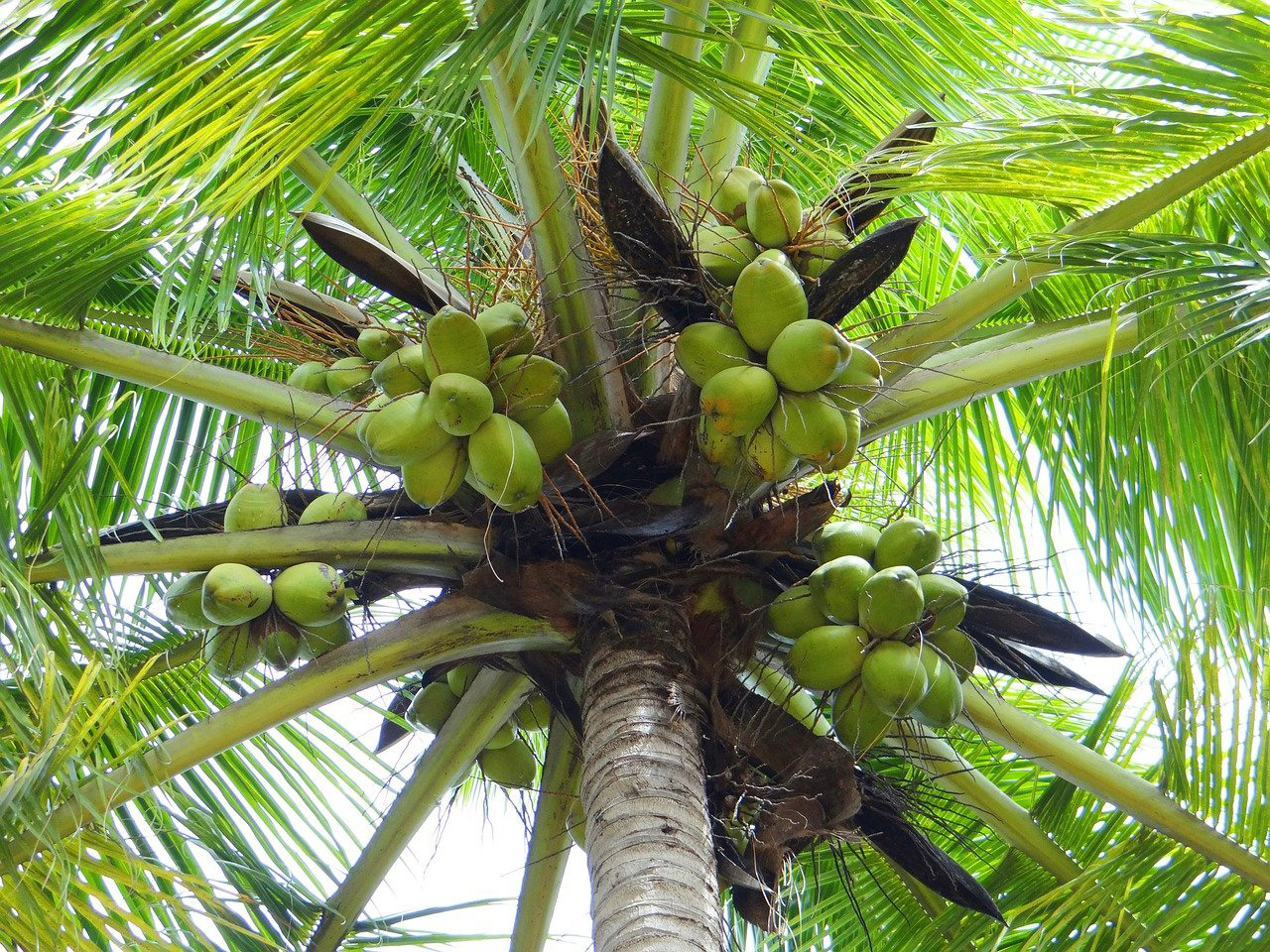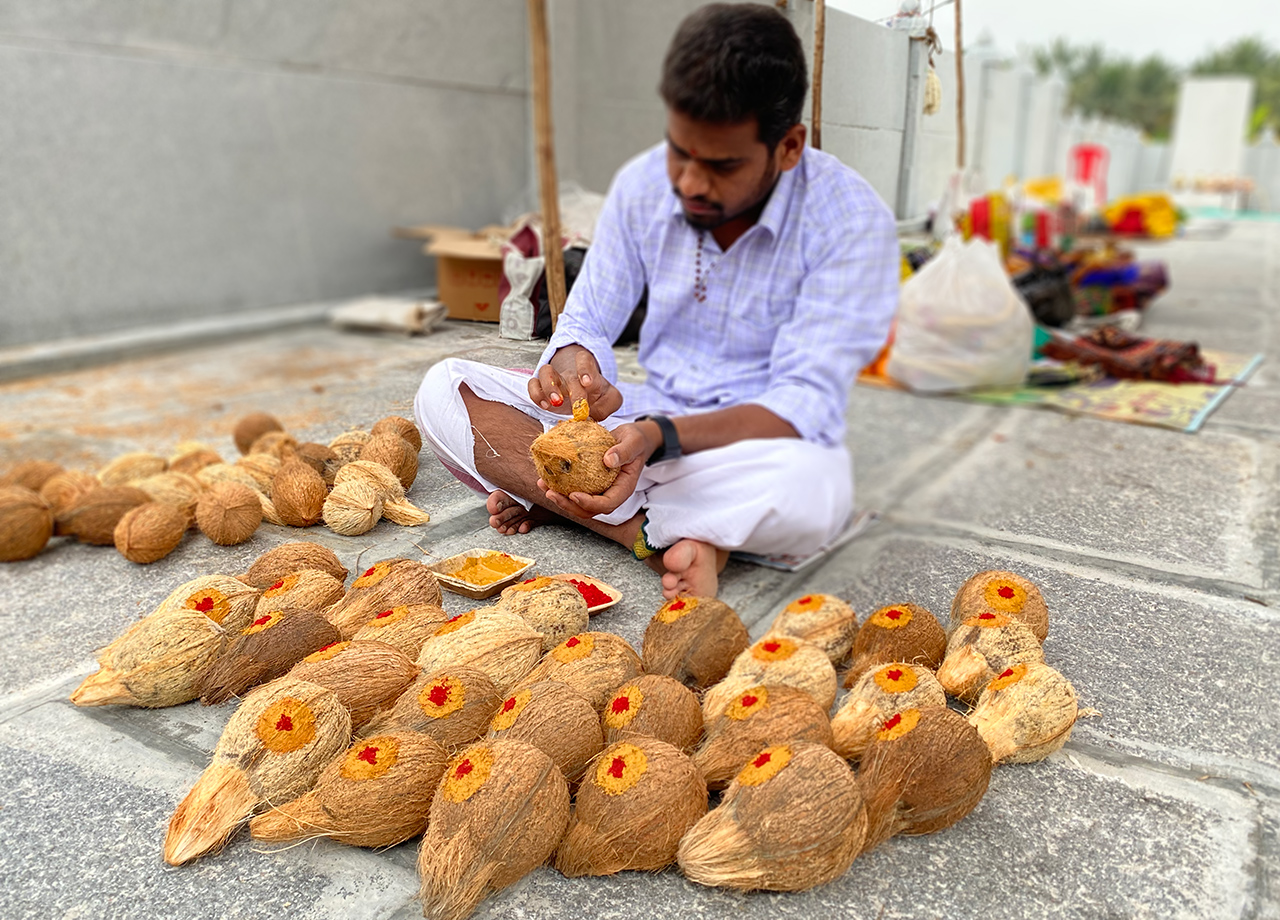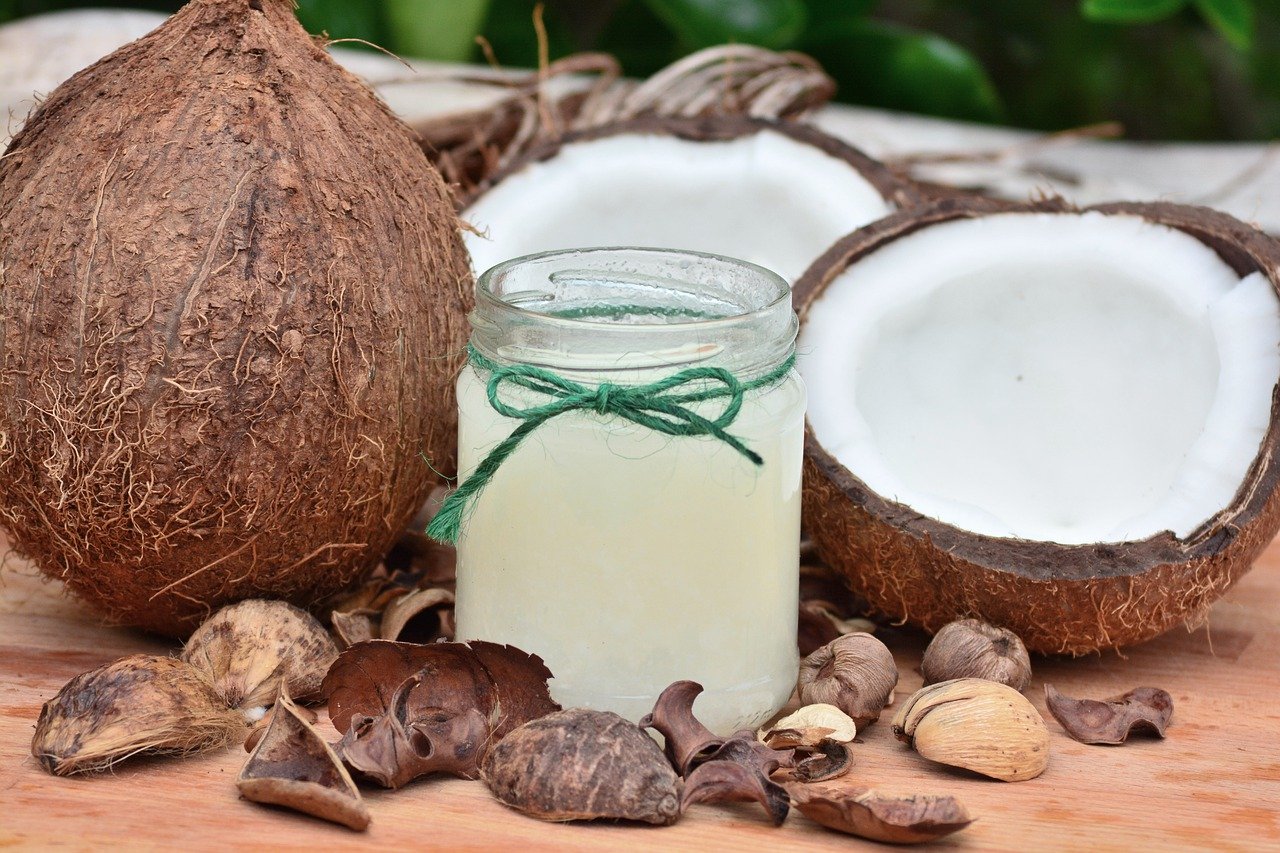
The tall swaying coconut trees are common, yet an enthralling sight in India. The coconut fruits bunched up together in a cluster give way to the flowering of the leaves, fluttering skywards and the solid bark in a singular manner makes its way down onto the earth, at the other end. The coconut tree stands as a reassuring, firm, and neat entity, as much as it has a calm and soothing effect on onlookers. They form some of the best scenic backgrounds of postcard splendor in India, whether it is along the backwaters of Kerala or on the outskirts of villages in West Bengal.
The aesthetics of the tree itself has made it a favorite amongst amateur and seasoned artists. I for one would always draw the coconut tree beside a house surrounded by mountains – a staple kid’s drawing exercise
Kalpavriksha

The coconut tree is also known as the Kalpavriksha because of the array of usages that the tree has. In fact, all parts of the tree are used in some way or the other, and a large range of products, including coir and oil, apart from the other edible items are availed from the tree. Needless to say, the actual fruit (technically called a drupe) is where the bulk of the magic lies. One can eat it raw, and the coconut water is a healthy drink, especially during the scorching summer heat. But the coconut is also widely used as an important ingredient for cooking purposes. Coconut milk and oil are essential parts of many South Indian dishes. Desiccated coconut is a wonderful add-on for various sweet dishes and many dishes of western India. Also, how can we forget our traditional coconut oil that has been the primary reason for our silky hair and soft skins?.
Coconut in Indian culture

With such a varied scope the coconut is not just essential in India, but also in many parts of the world, including South East Asia. But the importance of the coconut is not just limited to its pragmatic usages. In India, the coconut is a part of the cultural discourse as well. It is offered in prayers with many references of it as God’s fruit in the ancient Sanskrit texts. Considered as a sacred fruit the three marks on a coconut are often considered as the three eyes of the Hindu God Shiva. The coconut is an important part of many rituals, including weddings or house warming ceremonies. The coconut is also broken during various inauguration ceremonies or before construction of a new home, office, or vehicle.
The Green Coconut

Although the brown coconut is used more widely, the green and yellow coconuts are also equally popular, even though its product and cultural usages are discernibly lesser. But the sight of vendors on street sides standing with their carts laden with the coconuts is very familiar. The vendors expertly cut off the head of the coconut with their sharp sickles, swoop a straw through the freshly made hole, and hand over the coconut ready to quench the thirst of the tired and delighted bystander. The coconut water is sometimes sweet, sometimes bland, but is highly refreshing, and one of the best natural hydrating agents, that will leave you wanting more. If you are lucky, there is a layer of solid white coconut meat or malai lining the soft insides of the coconut. The vendor cuts the coconut open with dexterity and gouges out the solids with a spoon-like structure made from the outer shell of the coconut itself. This unique and absolutely natural way of devouring the delightful malai remains one of my most prized obsessions of Indian gastronomy, even to this day.

The coconut prevails an endearing part of our landscapes in its entirety. The tall trees are a part of our backyards, home, and travel journeys. The drupe is a part of our culture and diet. Its significance is felt not only by the men and women who are involved in its growth and nurturing or those for whom it becomes a means of livelihood. But others also feel it in different ways. Environment-friendly products, such as chairs, mats, and rugs are made from coconut husks. Various medicinal properties are derived from the drupe, roots, leaves, as well as, from the coconut water and milk. There are so many benefits that can work their way through the delectable coconut, and that turns it into this ideal entity, which is wholesome, thrifty, advantageous, and welcoming.






I love Indian Culture, paintings,I like to hike some day in Ellora and Ajanta caves. As so much is to be explored on the famous Temple Art cravings. So fantastic, inspiring for professional Portrait Photographers.
Thanks Ashok 🙂